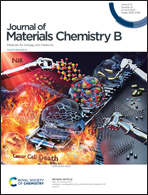Inorganic nanoparticles for photothermal treatment of cancer
Abstract
In recent years, inorganic nanoparticles (NPs) have attracted increasing attention as potential theranostic agents in the field of oncology. Photothermal therapy (PTT) is a minimally invasive technique that uses nanoparticles to produce heat from light to kill cancer cells. PTT requires two essential elements: a photothermal agent (PTA) and near-infrared (NIR) radiation. The role of PTAs is to absorb NIR, which subsequently triggers hyperthermia within cancer cells. By raising the temperature in the tumor microenvironment (TME), PTT causes damage to the cancer cells. Nanoparticles (NPs) are instrumental in PTT given that they facilitate the passive and active targeting of the PTA to the TME, making them crucial for the effectiveness of the treatment. In addition, specific targeting can be achieved through their enhanced permeation and retention effect. Thus, owing to their significant advantages, such as altering the morphology and surface characteristics of nanocarriers comprised of PTA, NPs have been exploited to facilitate tumor regression significantly. This review highlights the properties of PTAs, the mechanism of PTT, and the results obtained from the improved curative efficacy of PTT by utilizing NPs platforms.

- This article is part of the themed collection: Journal of Materials Chemistry B Recent Review Articles


 Please wait while we load your content...
Please wait while we load your content...